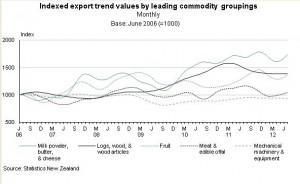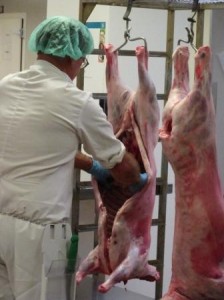 As epidemiologists go, Dr Dominik Alexander, is a surprise. He’s young, 39, doesn’t wear glasses or a white coat and is a previous professional kickboxer. However, the leading US epidemiologist also knows his stuff about cancer and nutrition research and he’s been over here in New Zealand sharing his expertise.
As epidemiologists go, Dr Dominik Alexander, is a surprise. He’s young, 39, doesn’t wear glasses or a white coat and is a previous professional kickboxer. However, the leading US epidemiologist also knows his stuff about cancer and nutrition research and he’s been over here in New Zealand sharing his expertise.
With extensive experience in health research methodology and interpretation of epidemiological studies, particularly nutritional epidemiology, Alexander is based in Boulder, Colorado, where he works for engineering and science consultancy firm Exponent Inc in its Health Sciences Centre for epidemiology, biostatistics and computational biology.
He delivers the sobering estimation that one in three people will be diagnosed with cancer in their lifetime. The strongest risk factor for cancer, generally, is age.
“With increasing numbers of older people, we are seeing higher rates of cancer and also diabetes and heart disease. This is also the case in developing countries, where the elimination of certain infectious diseases – which would have killed off more of the population early on – and lower infant mortality rates, means a higher rate of cancer and other age-related diseases in the population.”
Relating to nutrition, the types of cancer of concern are those associated with digestion, absorption and elimination such as the most common type, colorectal, through stomach/gastric to the less common oesophageal, pancreatic, liver and other cancers.
As an epidemiologist studying the patterns, causes, and effects of health and disease in defined populations, he’s involved in examining exposure and outcome.
“Food is a necessary exposure. All people have to eat,” he says, adding that the result of over-exposure leads to higher Body Mass Index (BMI) rates – overweight to obese – where there is an established increased risk for cancers such as colorectal, the most common cancer affecting the alimentary tract.
In his view, cancer prevention is all about control. The key is a health lifestyle. “It all starts with physical exercise and maintaining a healthy body weight. In addition you need a well-balanced diet,” he says.
Opinions + assumptions + perception = confusion
Trouble is, as everyone eats, every single person has an opinion on it and the perceptions of the general public, the medical fraternity and the media vary. That’s why the ‘study of the moment’ is leapt on, over-hyped, over-analysed and consequently gets a lot of airtime leading to consumer confusion.
But, you can’t view a single study in isolation, he notes. “Every study needs to be viewed in the context of the available body of scientific views, otherwise it can be misinterpreted.”
Good science is at the heart of good communication, he believes. Dr Alexander’s advice for those communicating with the public is: “Don’t say anything that can’t be backed up by science. Let the science speak for itself and don’t make an interpretation outside the bounds of the scientific results. Given the complexity with this type of product, there needs to be a cautious approach.”
What media get hung up on sometimes is the people funding the research and conflicts of interest. That can negate the worth of the science itself, he believes. “It’s very important to get to the heart of the issue with science and then focus on the science and the scientific basis for comments.”
In his opinion, what makes good evidence is transparency, objectivity, justification for doing the research, rationale and a clear and open basis for research.
“A lot of problems come in when the research is not open and transparent. Say what you’re going to do, do it and show what you learned,” he advocates.
Looking to the future
Looking to the future, we have a long way to go on the preventative side, he says, and continuous updates of cohort studies, don’t always shed light.
“We also lack long-term evidence of differences between organic versus conventional products, for example.
“This all takes us back to the holistic approach and concentrating on the healthy body weights and lifestyle elements.”
Dr Alexander’s articulate delivery comes with a sense of humour and the surprising revelation that he was once a professional kickboxer in the 1990s, before he moved straight to science at the University of Alabama in Birmingham (UAB).
“You could call me the toughest epidemiologist in the world,” he laughs.
At UAB, he was awarded a National Cancer Institute Fellowship for Cancer Prevention and Control and worked closely with the Department of Pathology where he designed and implemented epidemiological studies pertaining to colorectal survival. He is also the 2010 recipient of the UAB School of Public Health Alumnus for scientific excellence.
Dr Dominik Alexander PhD MSHP was invited to Australia and New Zealand in September in a visit jointly organised by Meat & Livestock Australia and Beef + Lamb NZ Inc.
This article appeared in Pen & Palate (October 2012), the NZ Guild of Food Writers’ ezine.






